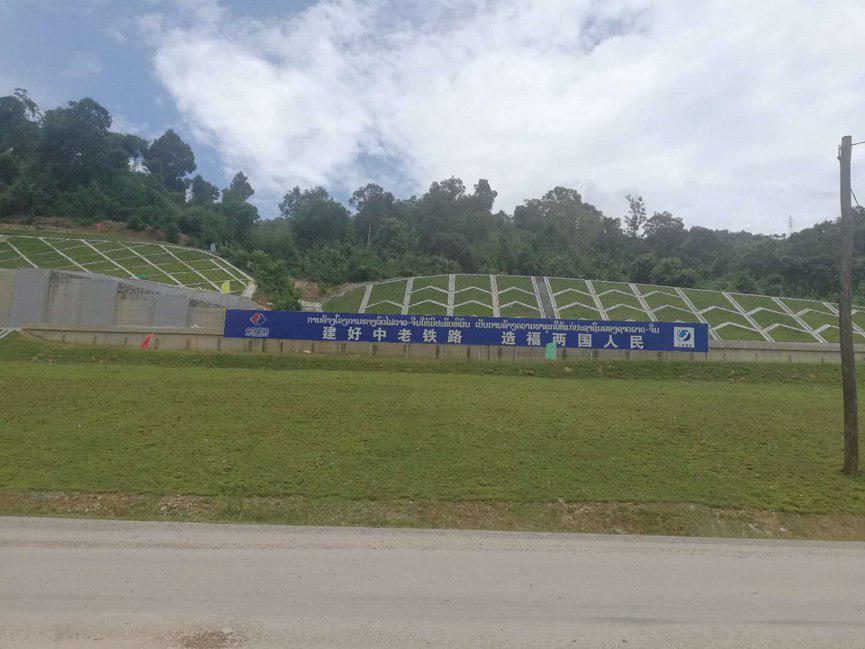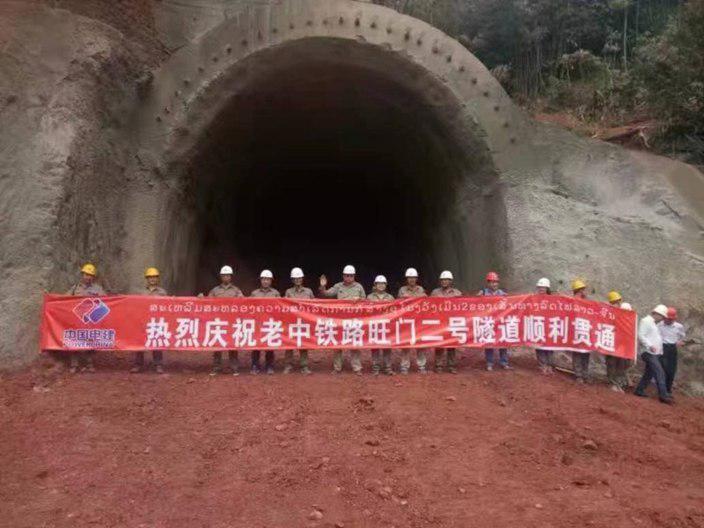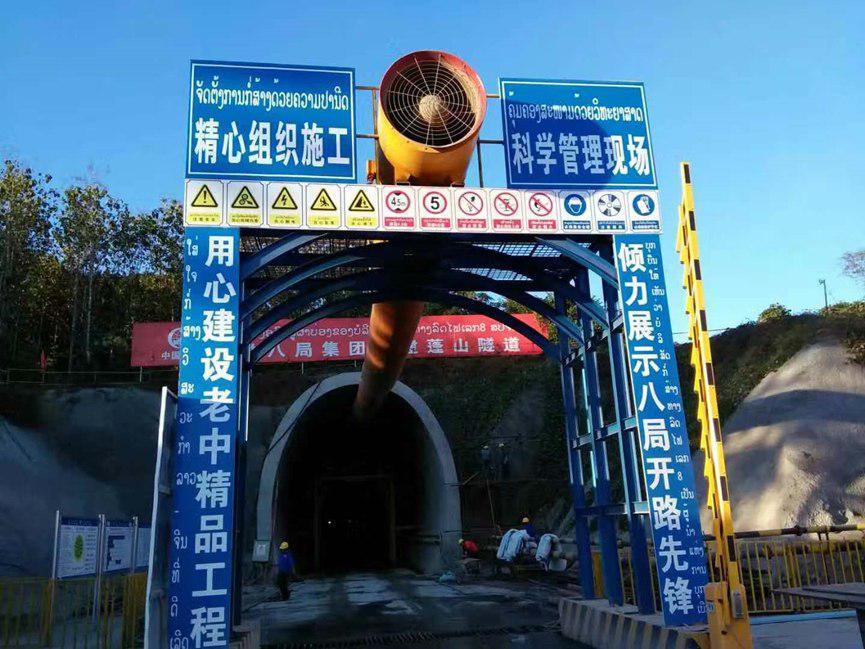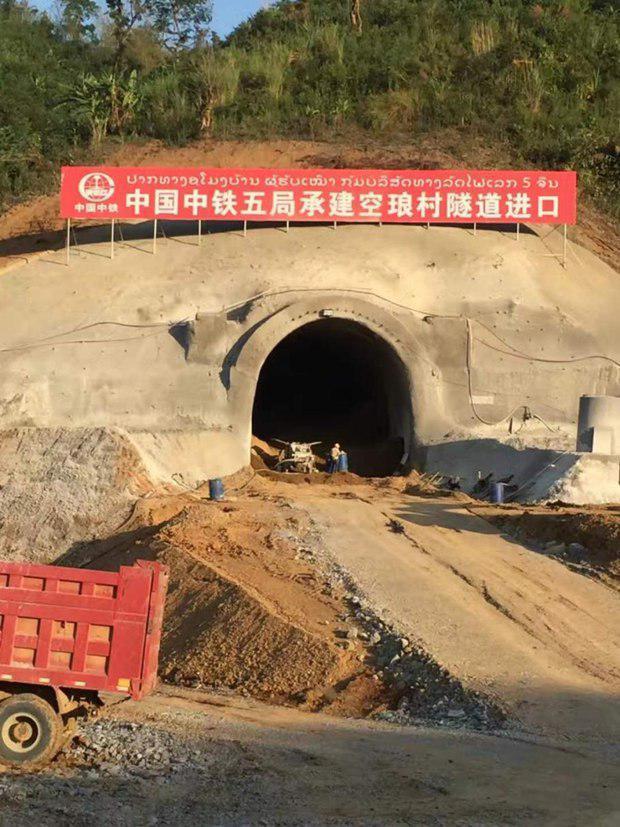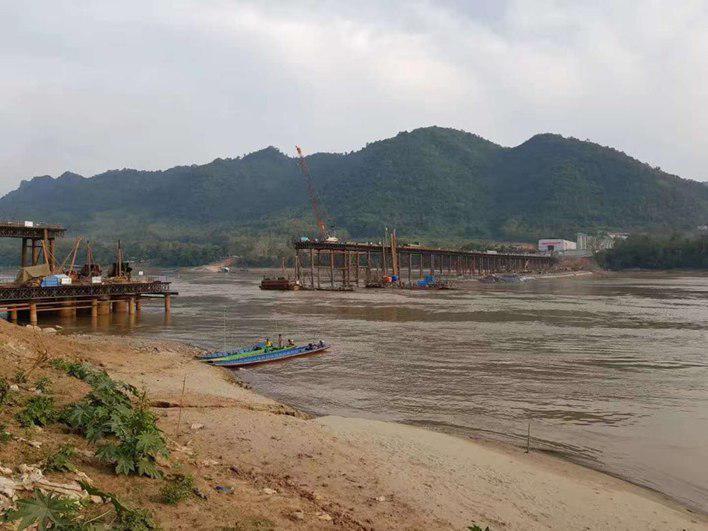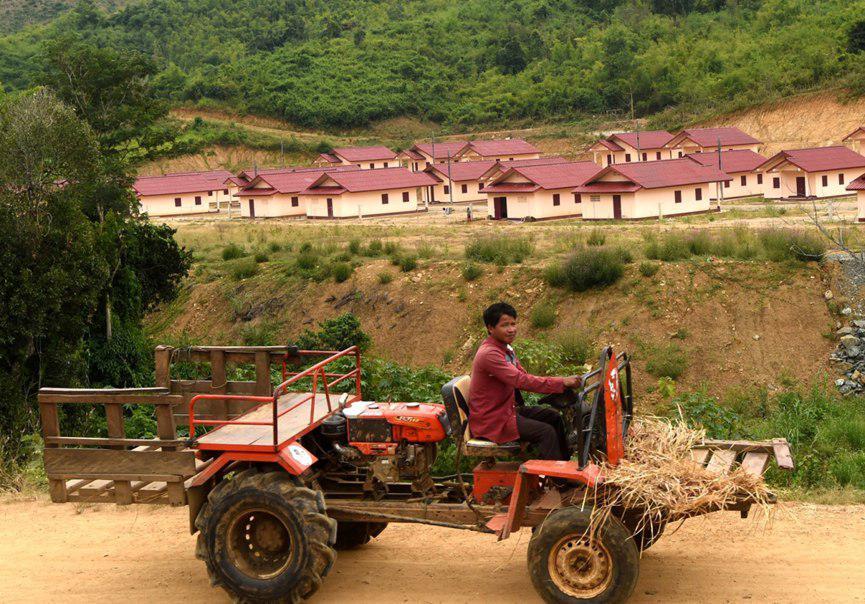Phnom Penh (FN), Nov. 20 – The China-Laos Railway starts from Chinese border in the north and arrives at Vientiane, capital of Laos. It is the first overseas railway project invested and to be built by China, and jointly operated and connected with China's railway network. The entire railway adopts Chinese technology and equipment, which is to be completed and open to traffic by December 2021. The project is designed with a speed of 160 km/h. The total track length is 414 km, among which the length of bridge is 62 km, the length of tunnel is 198 km, accounting for 62.7% of the total length.
As an important project along the “Belt and Road”, the China-Laos Railway is also an important part of the Trans-Asian Railway. The railway has been on a nine-year journey since it was approved by the Laos national assembly in 2010 and officially started construction in 2016.
From expectation to reality, the China-Laos Railway has brought many changes and expectations to the Lao people in recent years.
The China-Laos Railway boosts economy
Once the China-Laos Railway finishes construction and opens to traffic, the time from the China-Laos border to Vientiane will be shortened from 16 hours by bus to 3 hours by train. According to the report by the Ministry of Public Construction and Transportation of Laos, the China-Laos Railway will help Laos achieve its strategy of external cooperation and connectivity with China and other ASEAN countries, and will play an important role in attracting foreign investment, modern technology and human resources. The Vientiane Times of Laos also thinks that the construction of China-Laos Railway will become an important pillar of Laos' economic growth.
People along the railway are feeling the benefits deeply. “The construction of the Laos-China Railway will boost the economic development along the route and provide more job opportunities and possibility of development for local Lao people,” Natsavee Norasing, a resident of Luangprabang Province said in an interview.
“The China-Laos Railway project is under construction, with 40% of the project completed so far, and the most positive impact on Laos is to promote local employment.” Tang Xiaojun, a Lao mediaman, gives more convincing figures: “There were 7,112 jobs in six sections of the China-Laos Railway project in July last year, all of which were provided to the Lao people. Such mass hiring of Lao staff is rare.”
The poor infrastructure is an important reason for the slow growth of Laos’s domestic economy. With the construction of China-Laos Railway, the situation will be completely changed.
Nuke, a grocery store owner who lives near Vientiane railway station, is full of expectation about the China-Laos Railway. “We are all happy to have a railway here,” he said. “When it opens, more tourists will come and business will be better. Even though the government took over our land, but we will be compensated and our lives will change. When I get money, I'll visit China by train.”
Thingmiphong, a resident from Louangnamtha Province which is the first Lao province on the China-Laos Railway line from China, hopes that local farmers' products will go to international markets. She said Laos is an agricultural-dominated country, and the Laos-China Railway has provided convenient conditions for local agricultural products to go into overseas markets, which will increase farmers' income.
The direct feeling and expectation of the Lao people is to let human resources and products flow and keep economy alive. Natsavee Norasing, a resident from Louangphrabang Province said: “The railway can greatly improve Laos’s domestic transportation, promote population flow between China and Laos, which will provide huge space for development of the social economy, cultural tourism and labor market. Also, domestic demands of Laos will be further expanded. Mutual development and prosperity of culture and economy between two countries will be achieved. It is really convenient and good to local people."
The China-Laos Railway is like an engine that drives more and more local industrial chains. Huang Difu, general manager of the international branch of China Railway Corporation said, “The construction of the railway will directly drive the development of local engineering, supply of building materials, electricity, agriculture and animal husbandry, service industry, logistics and other industries in Laos. It will promote local employment and industrial upgrading. What’s more, the railway also plays an important role in promoting the development of tourism, trade, agriculture, animal husbandry and processing industries along the line.”
Of course, Vientiane is not the end of the China-Laos Railway. When the China-Laos Railway is finished, there will be more development space for the ASEAN. The time the China-Laos Railway started building, Yuxi - Mohan Railway in China also did, which is expected to be completed at the same time. By then, the Central Line of the Trans-Asian Railway will take shape. In the future, China-Laos Railway will connect with railways of Thailand, Malaysia and other countries and become a new economic link between China and the ASEAN.
Compensation can better people's lives
Before the construction of the whole railway line in December 2016, land expropriation and compensation statistics work was basically finished: about 3,000 hectares of land will be permanently taken over and 800 hectares of land will be temporarily used. 4,411 households will be affected due to the construction of the railway project.
After many coordinating meetings between China and Laos, the Lao government is now seeking the opinion of relevant parties on the compensation standard. According to requirements of railway projects, the compensation prices for lands in different sections are also different, which is mainly based on whether the land is connected to national highways, provincial highways, and village roads or no roads.
Villagers affected by the railway project will also be paid for their houses and apartments, as well as small buildings such as kitchens, sundries, garages, shops and animal houses. In addition, the developers of the railway project will compensate the crops and fruit trees that must be uprooted due to the railway construction.
In order to ensure the compensation process is fair and transparent, Laos government also requires relevant parties to open accounts at Laos foreign trade banks. At present, four provinces and one city along the railway have agreed on the amount of compensation. According to the obligation of contract, Laos is responsible for land compensation, while Laos-China Railway Company is responsible for demolition compensation. About 500 million Yuan has been allocated as demolition compensation budget, and the Laos government promises to take necessary measures to ensure that the compensation process is open, fair and orderly.
According to the Laos statistics bureau, the Per capita GDP of Laos was $2,468 in 2017. The government's compensation standard is 320,000 kips - 3.5 million kips per square meter (about $37- $410 per square metre). Plus other compensation for farmland, homesteads, and young crops and so on, the amount of compensation will be considerable and equal to the annual income of local people. “Reasonable compensation for demolition and relocation will be helpful to improve the living and housing conditions of the people along the railway." said Laos’s reporter Tang Xiaojun.
“Although the railway project affects factories, farmland, private land and villages in northern Laos including Louangnamtha, Oudomxay and Louangphrabang, the government is willing to compensate, and the pricing is reasonable, so people can accept it.” Khamsam Laochong, a resident from Oudomxay Province said: “I hope the railway can make life easier for local people and help us take away poverty.”
Chinese companies such as China Railway Engineering Corporation, Power Construction Corporation of China declare that they will make the China-Laos Railway “a way of friendship, a way of incorruptibility and a way of wellbeing”. They never forget the public welfare while building the railway.
Since the project department of the Power Construction Corporation of China was set up in Xieng Ngeun district of Louangphrabang Province in 2016, they have built about 104 km of roads in Laos, and input about 118.58 million yuan. They also built a new 72 km power line and a new transformer substation of 115- 22kv in the river, as well as five reservoirs and 11 km of water pipes. They participated in landslide repair projects many times on Louangphrabang section of No. 13 national highway in Laos. In addition, the project department has also opened a professional skills training school for the Lao workers, and conducted three training courses, providing more than 100 local jobs.
“Though building the China-Laos Railway can bring some negative impacts, such as social security problems caused by large population movements, insufficient accommodation, cultural conflicts, and environmental pollution in Laos." Natsavee Norasing, a resident of Louangphrabang Province, dose not worry about these problems: “We are working together to solve these problems. While doing this, the people of two countries will be more intimate and united like a family.”
Western medias are skeptical about the China-Laos Railway. Whatever the compensation or environment issues, the Lao government and people will have reasonable policies and comprehensive evaluation. In constructing the China-Laos Railway, the two countries will cooperate with each other and understand each other, because it is not only a traffic artery, but more like a “friendship bridge” linking the people of two countries.
Thanks to the China-Laos Railway, all things will be better, wherever in China or Laos.
=FRESH NEWS
